Log in or create new account to save this product to your wishlist.
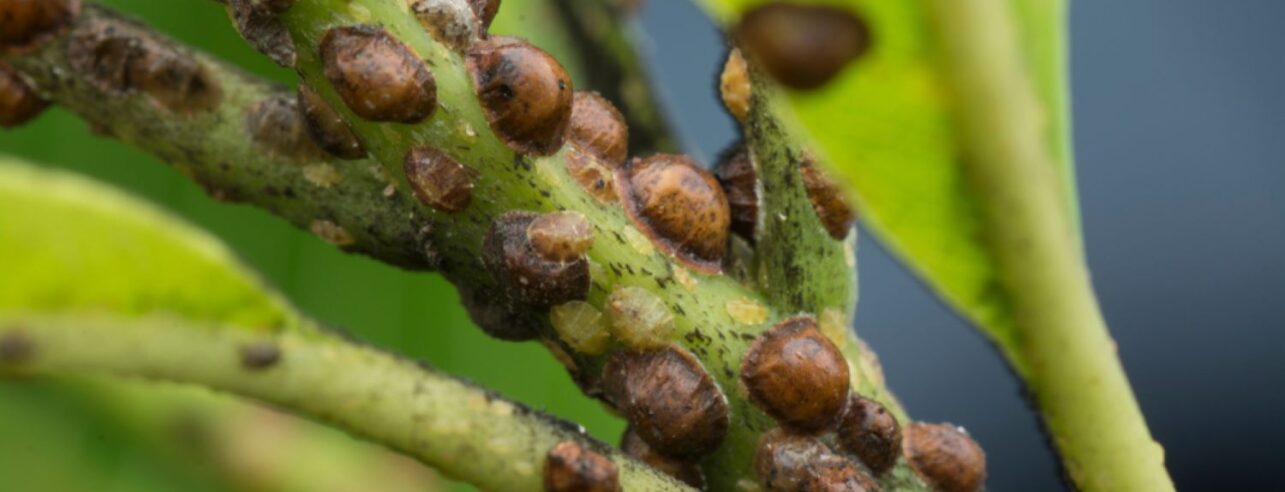
How to Prevent and Control Scale Insects
Scale insects are tiny sap-loving insects that can kill your plants if left to their own devices. How to identify them, treat the problem, and nurse your plants back to health after an infestation.
🌱 All important maintenance moments for your lawn during the year. Leave your email and we will send you the lawn calendar for free.
Enter your email
Receive the lawn calendar in the mail
Enjoy a green lawn all year round!

- Order by 2PM = shipped today
- 250.000+ satisfied customers!
- 60 day satisfaction guarantee
Have you spotted tiny insects with waxy shields or shells hanging around your plants? You might have an infestation of scale insects! And left to their own devices, they can decimate your veg patch or flowerbeds.
- What are scale insects?
- Recognise and distinguish between scale insects
- How to identify a scale bug infestation
- The life cycle of a scale insect
- Transmission and the spread of scale insects
- Scale insects’ favourite plants
- Fighting scale insects
- Aftercare for infested plants
- Prevent scale insects
- Plants that deter scale insects
- FAQs
Scale insects are tiny pests commonly found in gardens and on plants that suck that sap from your beloved greenery. In fact, you’re more likely to see the result of an infestation before you spot the little critters.
This article is about preventing and controlling scale insects to ensure your garden thrives, eradicating these unwanted visitors and taking steps to help infected plants recover.
Ready? Let’s go.
What are scale insects?
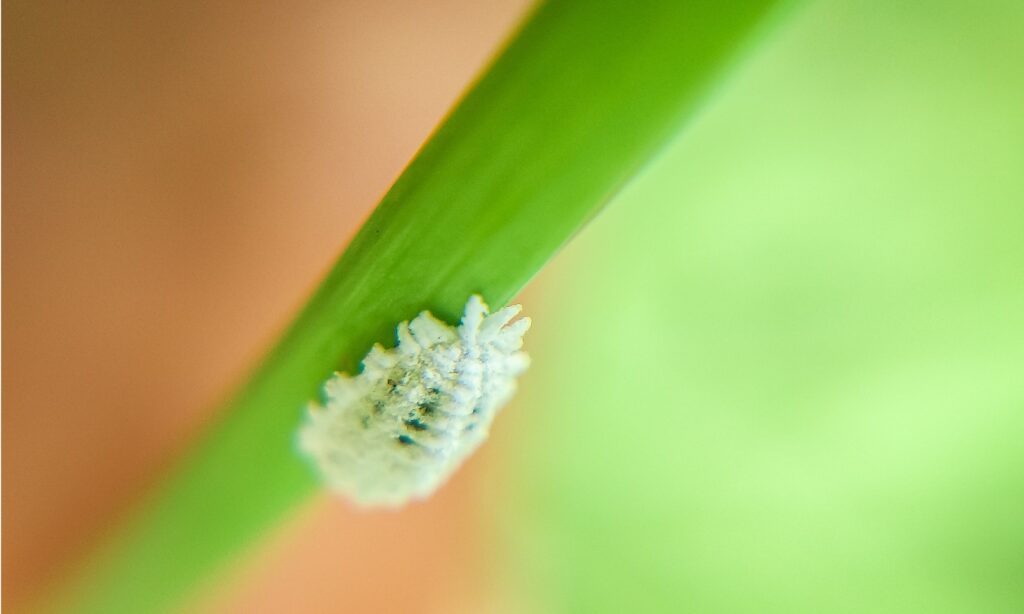
These tiny little insects are found all around the world, sucking sap from plants wherever they can find a tasty morsel. Belonging to the Hemiptera family, scale insects carry protective waxy shields or shells over their bodies that protect them from enemies, weather, and pesticides.
Most scale insects feed by piercing their long straw-like mouthparts into the fleshy stems of plants and leaves. This is how they reach the sap, draining the plant of its essential sugars and nutrients.
After a while, the scale insect infestation weakens the plant and, in some cases, kills it — especially if the infestation has grown in size.
Recognise and distinguish between scale insects
The most characteristic feature of a scale insect is its protective shell, which often looks dusty or woolly.
However:
Most scale insects are tiny — typically shorter than 5mm in length — so individual insects can be difficult to spot (especially if you’re not wearing your glasses!).
Scale insects can be green, brown, grey, yellow, or even red.
Some features to look out for:
- A shell — this is the most distinguishing feature of a scale insect
- Body shape — scale insects often have a flat, oval shape without antennae. This helps differentiate them from Aphids, which are typically longer in the body, have antennae, and no shell.
- Movement — aphids are more active than scale insects, which rarely move in their adult form. Adolescent scale insects can move (they just choose not to very much – typical teenagers!)
How to identify a scale bug infestation
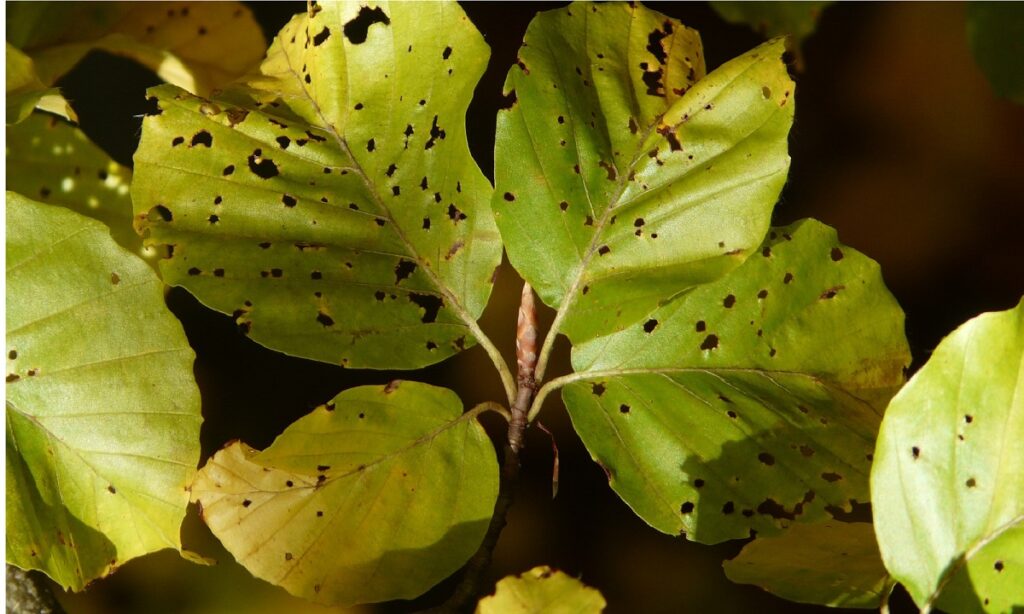
Take a close look at your plants — they may show the following signs of scale insect infestation:
- Sticky residue — scale lice, such as mealybugs, suck the plant’s sap and excrete a sticky, sugary residue on the plant’s leaves and stems, called honeydew. This attracts ants.
- Deformed or yellowish leaves and fruits — scale insects steal nutrients from the plant, resulting in yellow, misshapen fruits and leaves that die prematurely.
- Clusters of insects — it’s difficult to spot individual scale insects, but if you look closely underneath the leaves, you may find a colony of small, woolly insects.
- Ants — as mentioned, ants are attracted to the honeydew excreted by the insects, forming a symbiotic relationship — literally nurturing and protecting the colony. So, if you notice a large number of ants near your plants, this could indicate a scale insect infestation.
The life cycle of a scale insect
Depending on the species, the life cycle varies. However, most consist of the following stages:
- Egg — the adult scale insect lays its eggs and hides them underneath its protective shell. Then, it emerges as a nymph.
- Nymph/crawler — nymphs have legs and antennae and are sometimes called “crawlers” because they can walk. Scales are most vulnerable to pesticides at this stage before their shells are yet to harden. They continue to shed their skin until they develop their shell.
- Adult — at this stage, most scale insects move very little, and their shell helps protect them against most pesticides. An adult female lays hundreds of eggs at a time, having produced them asexually, depending on the species.
Transmission and the spread of scale insects
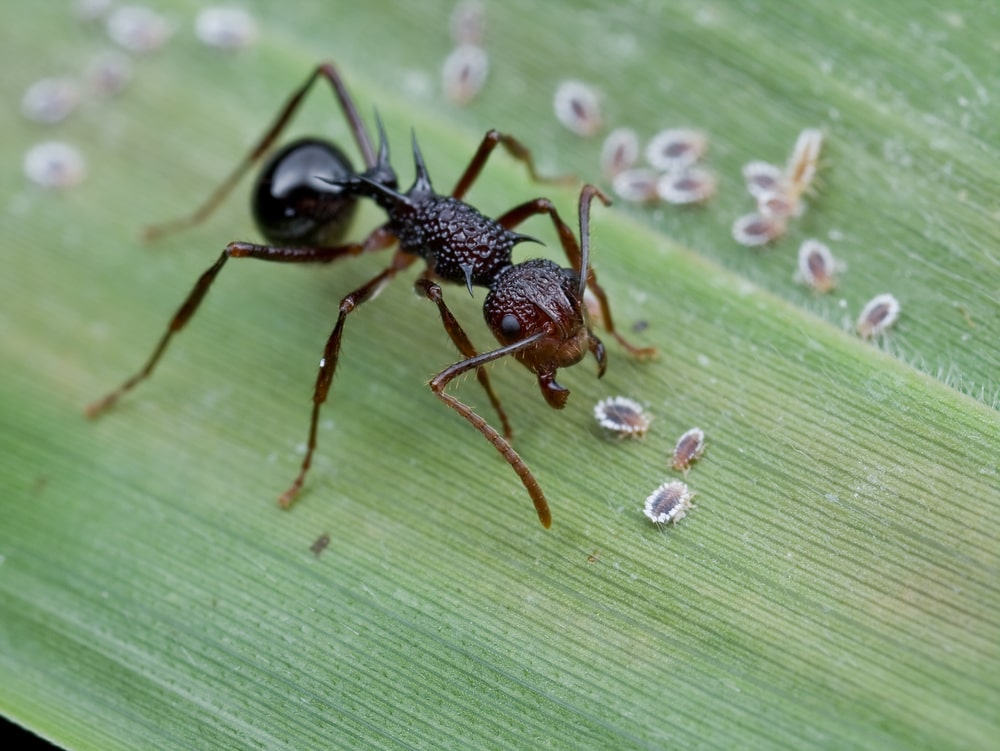
Scale bugs spread in a variety of ways:
Crawling and flying — some scale lice move by crawling, and some can fly short distances. However, flying for most scales is rare.
- Wind: scales are tiny insects, so a strong gust of wind can carry them from one plant to another.
- Ants: as mentioned, ants and scale insects, like mealybugs, enjoy a symbiotic relationship. The ants protect the bugs so that they can feed off their honeydew, so scale insects can hitch a lift on an ant, which contributes to the transmission of the problem.
- Human activities: it’s essential that you’re careful around infected plants. For example, if your shirt or jeans rub past an infested plant, the bugs can stick to the cloth and transfer to other plants.
Scale insects’ favourite plants
Scale insects can infect any plant, but they’re more often attracted to specific plants:
- Ornamental plants — roses, hibiscus, azaleas, geraniums, and fuchsias.
- Vegetable plants — mainly tomatoes, peppers, aubergines, and potatoes.
- Fruit trees — apple, peach, citrus, and plum
- Ornamental trees — boxwood, forsythia, privet
- Houseplants — ficus, orchid
Fighting scale insects
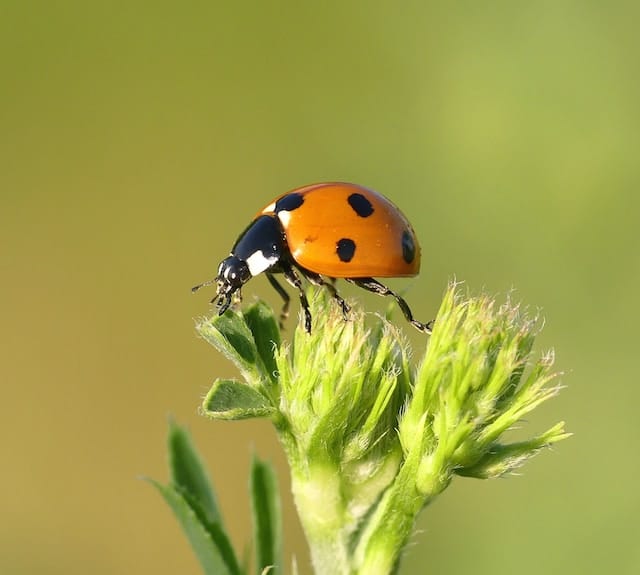
The most humane way to get rid of scale bugs is to remove them by hand — but this isn’t an ideal solution and is not always permanent.
To remove them manually, wear disposable gloves and use a soft cloth to rub the bugs off the plants.
Alternatively, you could use a powerful jet of water to wash the bugs away — but be careful not to damage the plant!
Perhaps the most effective method is encouraging natural enemies like ladybirds and parasitic wasps. Introduce lots of nectar-rich flowering plants that attract ladybirds into your garden.
Insecticides are particularly effective, easy to apply, and will not harm the plant. Always read the instructions, and treat chemical insecticides as a last resort. However, a range of natural alternatives, such as neem oil, will eradicate pests without harsh chemicals.
Aftercare for infested plants
After infestation, give the plant some TLC to promote their recovery.
Follow these tips once you’ve solved the problem:
Water and feeding — water according to the plant’s needs. Not all plants need lots of water, but — in general — don’t let the soil dry out. Keep the soil moist and apply a general-purpose fertiliser to help it bounce back.
Pruning — cut back damaged plant parts, such as leaves and branches. This will help promote new growth.
Prevent scale insects
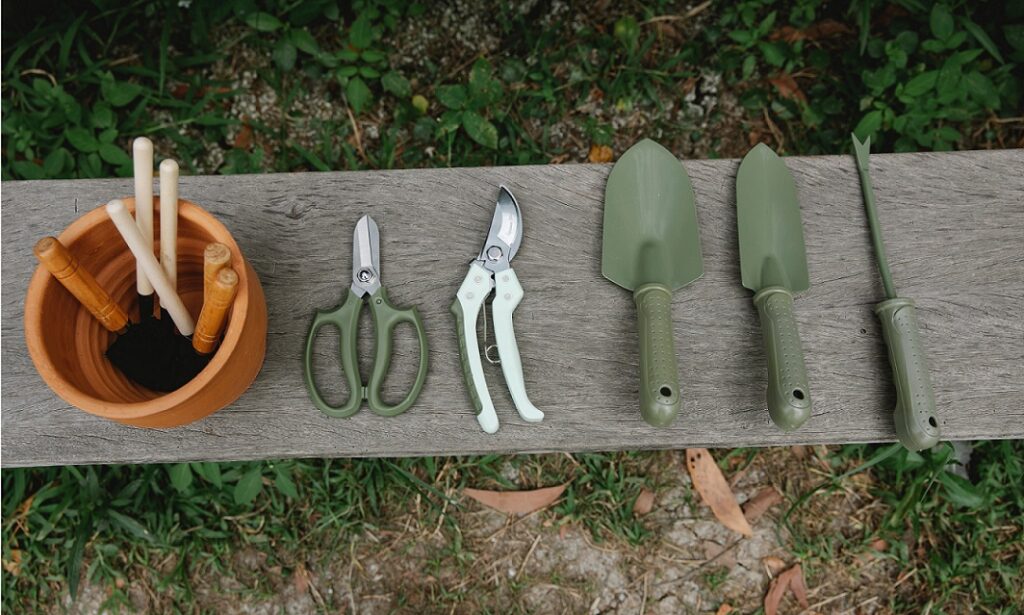
Prevention is always better than cure.
So, if you’re introducing new plants into your greenhouse, keep them in isolation initially to prevent an unseen infestation from spreading to your other plants. If, after a week, there’s no sign of bugs, it’s safe to introduce the plant.
Inspect your plants regularly — a fast response is always the best solution! Look for sticky residue, deformed leaves or fruit, or the presence of tiny little waxy-looking bugs.
Keep your plants healthy and robust by watering, fertilising, and thinning, making them less susceptible to pests. Remove weeds as soon as they occur to minimise potential food sources for scale insects.
And look out for ants — their presence is a sure sign of scale insects.
Plants that deter scale insects
If you’re experiencing frequent infestations, introduce some of the following plants into your garden to deter the little critters:
- Herbs: rosemary, lavender, oregano, thyme — all natural deterrents due to their pungent smell.
- Strong-smelling bulb plants: garlic, onions
- Ornamental plants: nasturtium, marigolds
- Ferns: many fern species deter scale insects. These attractive plants offer beautiful foliage and are excellent in borders.
- Trees: cypress, fir, pine
FAQs
Scale insects feed on a plant’s sugary sap, depriving the plant of its essential nutrients and water. A scale insect infestation significantly weakens the plant, leaving it susceptible to dying. These little critters prefer warm, dry environments, so they are particularly common pests in greenhouses.
You can remove scale insects by hand, using a soft cloth to remove them and the sticky residue they leave on the plant (which attracts ants). However, the most effective method is introducing or encouraging beneficial enemies, such as ladybirds and parasitic wasps. Using chemicals to kill an infestation is possible, but I think you should use these as a last resort.
Adult scale insects rarely move but can spread from plant to plant, carried by the wind. They can also be transported by ants (yes, really!) or by rubbing against your clothes. So, be careful around an infected plant — better still, isolate it until you’ve dealt with the problem.
Any questions?
I hope you’ve got all the tips you need to handle a scale insect infestation. But if you have any questions, don’t hesitate to get in touch.
We love hearing from you and will do our best to reply as soon as we can.
Alternatively, add a comment to the Comments section below or check out our comprehensive Help & Advice section.
Thanks for reading!
-
Orchids: A Complete Guide on How to Care for ThemWant to give your orchid the best possible care? Discover essential tips from placement to watering and pruning. Learn everything you need to know!Read more
-
Growing Wisteria Made Simple: From Planting to Perfect BloomsWith blossoms like a purple waterfall, Wisteria sets an almost magical and colourful mood. If you want to grow this beauty in your garden, you’ll need a bit of patience. Don’t worry, it will most definitely pay off.Read more
-
How to Build a DIY Greenhouse: A Practical Guide for Smart SpendersImagine extending your growing season throughout the year, nurturing tender plants regardless of the weather, and creating a personal garden sanctuary. This is precisely what a DIY greenhouse offers you. Let’s learn how to build one.Read more
-
How to Grow Eucalyptus in British GardensWith a little love and care, eucalyptus trees can thrive in English gardens. Since they don’t germinate well without proper help, there are not considered invasive. So, there is no reason not to plant them if you enjoy their looks.Read more
-
Transform Your Garden with All-Year-Round Flowering PlantsDid you know you can enjoy blooming flowers even in January? With the right selection of all year round plants, there’s no need to wait until spring to add some colour to your garden.Read more
-
How to Create a Butterfly Garden: A Simple Guide for British GardensThe UK's butterfly population includes 59 different species. These beautiful winged creatures face a steady decline because of habitat loss, pollution and changing weather patterns. Your garden can become a vital link between nature reserves and natural habitats. Let’s explore how.Read more
-
Volcanic Rock Dust for Your Garden—Application and TipsDid you know that volcanic rock dust is a brilliant organic soil improver? This article explains exactly what it's good for and how to use it properly.Read more
-
How to Use Landscape Fabric ProperlyIf weeds or erosion in your garden are troubling you, landscape fabric might be the solution. We’ll explain how and when to use it properly, just keep on reading.Read more
Leave a comment
Your answer will be displayed on the site and the interested party will be notified by email.
Leave a comment
Have a question or want to share your experience? Leave us a comment.

- Order by 2PM = shipped today
- 250.000+ satisfied customers!
- 60 day satisfaction guarantee

- Order by 2PM = shipped today
- 250.000+ satisfied customers!
- 60 day satisfaction guarantee

🌱 All important maintenance moments for your lawn during the year. Leave your email and we will send you the lawn calendar for free.
Enter your email
Receive the lawn calendar in the mail
Enjoy a green lawn all year round!






















Comments (0)
There are no comments yet. Well then, what are you waiting for to
Be the first to write your comment!inaugurate this pretty page?
Do you have some comments?